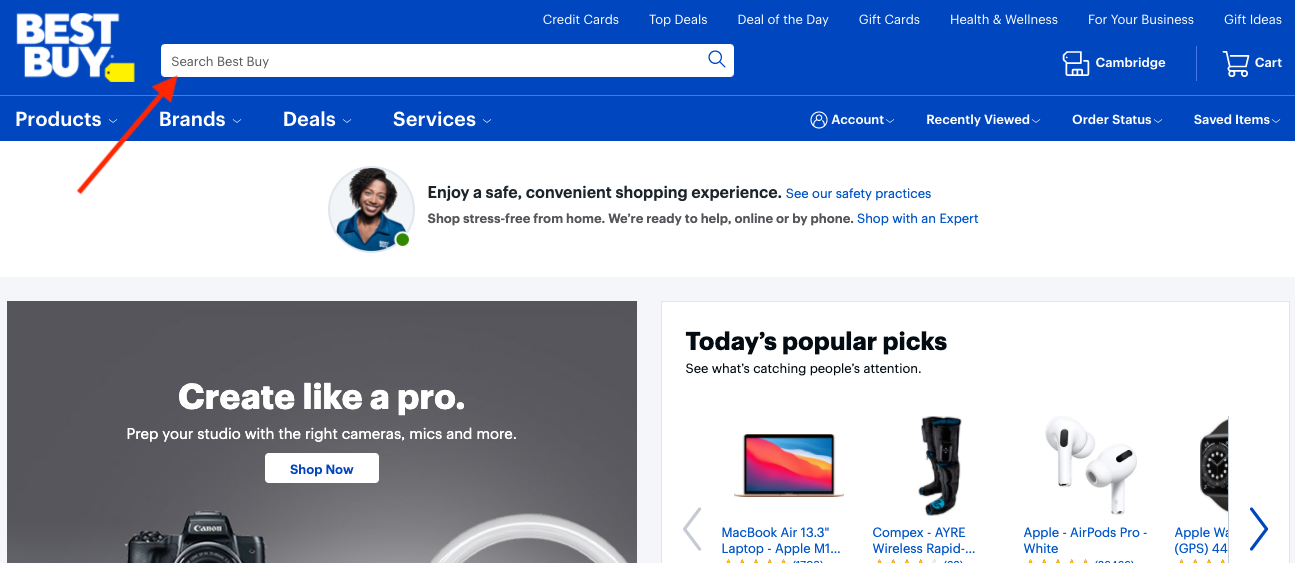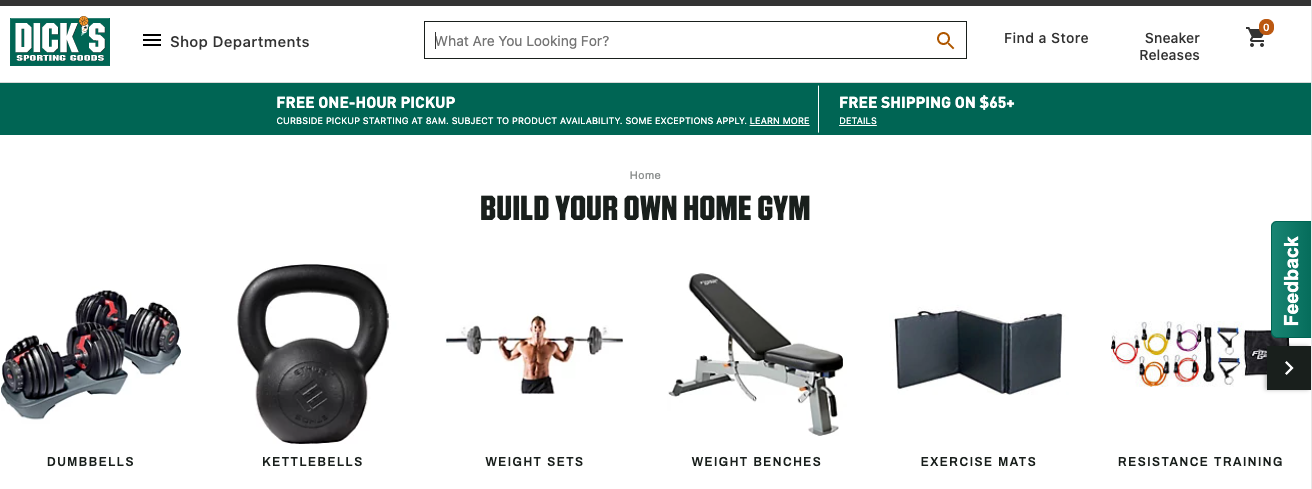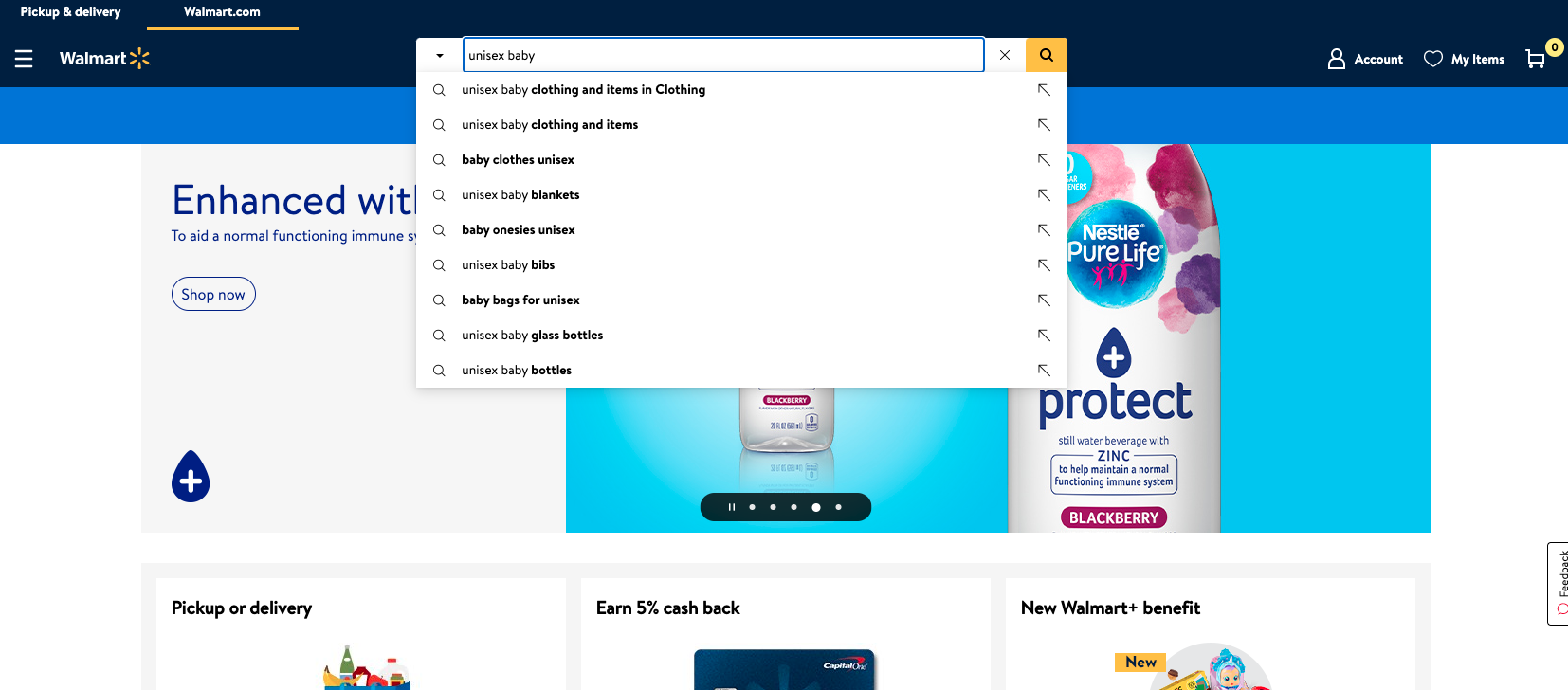Focus on the big things.
That sounds like great advice, right? Until it isn’t.
You’ve probably spent time and money on the ‘big things’ like a well-designed website.
What’s more, you consistently spend money on flashy adverts. As an ecommerce business, you need these investments to pay off.
Instead, you can’t seem to make conversions on your website.
Your revenue slowly trickles in, and you’re left scratching your head in confusion.
So what could be the problem?
Your ecommerce site search.
Look: The reality is that your business may need different ecommerce site search strategies.
It’s time to implement ecommerce site search best practices.
But first, what’s ecommerce site search?
Let’s find out.
What is Ecommerce Site Search?
This process involves using a search engine to find what the user is looking for by matching their search terms with your store’s products.
Site search involves more than just the search box; it also refers to faceted search, product ranking, and synonym management.
An ecommerce site search solution filters and relates products based on the keywords visitors to your site use. Product recommendations such as product name, color size, or product code then match specified keywords.
But is this process essential? Yes, it is.
Let’s explore whether ecommerce site search is suitable for your business.
Ecommerce Site Search-Good for Business?
Here’s the reality. Your ecommerce search bar is the anchor to your store.
A fast and accurate site search is essential to direct buyers to the right products. If customers can’t find what they are looking for, they leave.
Do you want more revenue? Focus on ecommerce site search!
So why does site search matter so much?
Here are a few reasons:
Money! Money! Money!
This isn’t an exaggeration.
Helping visitors to your site find what they’re looking for means more revenue. If visitors don’t see what they want, they leave.
Buyers expect rapid search results and a positive customer experience.
If you can’t deliver a great site search experience, you’ll lose out to competitors who can.
Fact: Technology comes at a price—but it’s worth the investment.
A positive ecommerce site search experience means buyers are likely to spend more money on your business.
Valuable User Data
Good site search technology helps you collect valuable data on your customers.
Data such as buyer preferences and how visitors interact with your site is useful for business decisions. Knowing your customers helps with your conversion rates.
Intriguing, isn’t it?
Let’s dive in and explore the ecommerce site search best practices.
7 Best Practices Site Search Strategies to Improve Your Conversion Rates
#1: Search Box Easy to Spot
Have a clearly identifiable search box.
When visitors find a complex site, they’re more likely to look for the search button first.
Think about what happens to Amazon.
Ecommerce sites need a noticeable search box. If your site’s search box is difficult to find, visitors will leave your site.
Consider having a noticeable search icon or GO button.
#2: Have Text In Search Box to Encourage Searches
Adding a prompt in the search box is a great way to guide visitors to your site.
For example, you can include the term “search here.”

Visitors don’t need to delete the text. The text should automatically disappear.
You can also provide additional information within the search box. This element can speed up the search process. For example, you can include ‘enter product name or brand.’
#3: Have a Search Box Big Enough for Usual Queries
Your search box shouldn’t be too short.
A short search box pushes site visitors to shorten their queries.
Clarity is vital in ecommerce site search. A short search box is also confusing to buyers because they can’t see their full search term and have difficulty editing it.
So how long should a typical search box be? Consider a 27-character-long search-box.

#4: Have Search Box on Each Page
Don’t want visitors to your site hitting the back button? Make life easy for them.
Display the search button on each page of your site (except the checkout page).
Consider the placement of the search button on each page. An excellent place to start is to see where your competitors place theirs. This gives you an insight into where visitors expect to find the search button.
A search box on the checkout page can distract buyers from completing a purchase. Consider excluding it.
#5: Implement Search Query Autocomplete
Search engines predict search queries as users type. Search query auto-complete assists visitors to your site find the products they want—faster.
Autocomplete suggestions help users construct search queries that give them the results they want.

By providing auto-complete versions for specific queries, you guide visitors to the most in-demand and relevant products on your site.
With search query autocomplete, you provide visitors with recommendations and increase the relevancy of search results.
#6: Focus on Mobile Search to Turn Browsers into Buyers
Your website needs to be optimized for mobile as well as your search results page.
Why?
Currently, the majority of people use their smartphones to research products online. Make changes that take into account small screen space.
For example, you can limit the number of result descriptions.
Mobile users may lose interest quickly if there are too many search results or products displayed. Consider having the search bar visible by default to keep them interested.
#7: Use Natural Language Processing (NLP) for Better Results
NLP is a program’s ability to understand human speech as it’s spoken.
Typically, users type a search query in the same way they would say it aloud to a friend and get a relevant answer.
NLP allows users to use common phrases, synonyms, and semantics. Also, NLP can handle complex searches.
For example, assume a user wants an ‘inexpensive small laptop.’

An NLP-enabled search would quickly provide the results the user needs because AI helps relate context and intent to product data. Exactly. This saves a lot of time and effort for the visitor and speeds up the buying process.
Take Care of The ‘Small’ Stuff Too
It’s easy to focus on the big stuff and miss the critical ‘small’ stuff. It’s time to leverage eCommerce site search.
You now know the best practices when it comes to ecommerce site search. It’s now time to implement these strategies.
Do you want help?
Partner with Zoovu today and improve your conversion rates.
We’re rooting for you.


